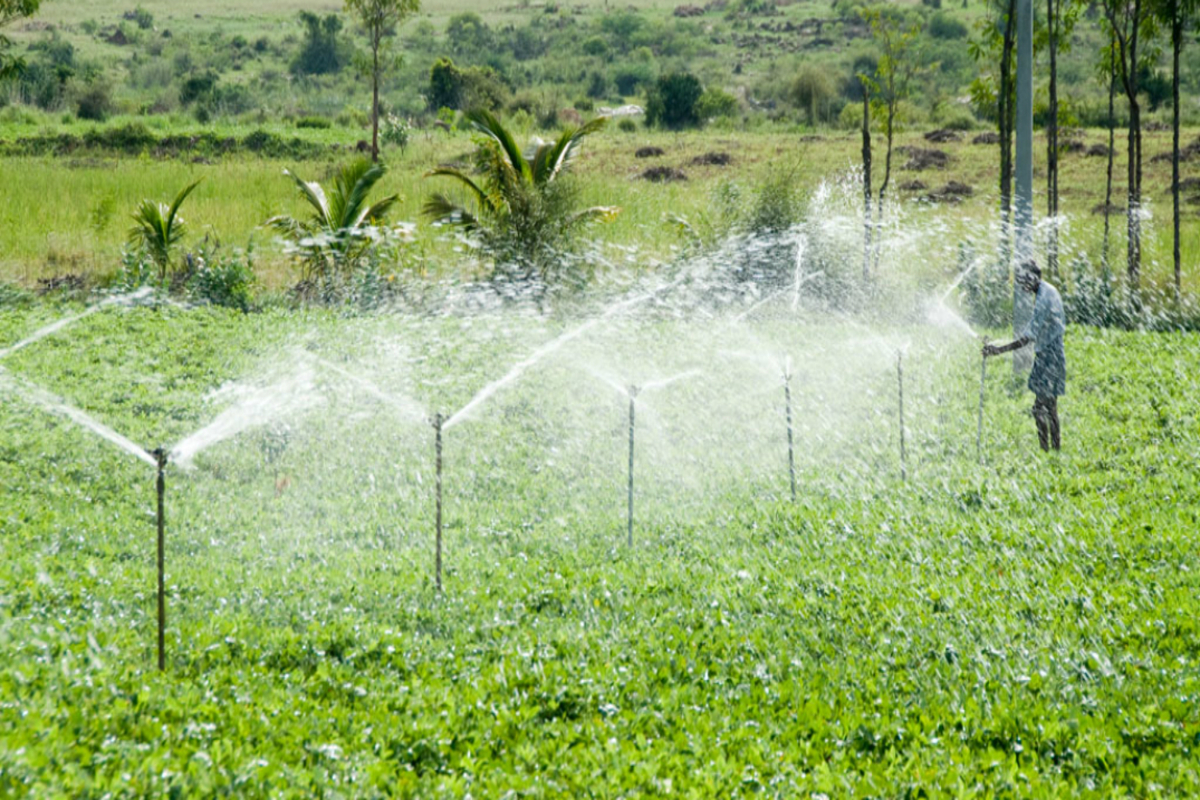Climate activist Greta Thunberg detained twice during demonstration in the Netherlands
Over 400 people were detained on Saturday, according to the police, including 12 for incitement. Activists said Thunberg was freed later.
At a time when the ongoing Russia-Ukraine war has induced a global food shortage, the spotlight is on the agriculture sector in India. Countries facing food shortages because of impaired import from the two warring countries are seeking grains from India.

Climate smart water saving agri-technologies need of the hour (File Photo)
As the war in Ukraine rages on, one of the biggest impacts felt world-wide is in the area of food security. At a time when the ongoing Russia-Ukraine war has induced a global food shortage, the spotlight is on the agriculture sector in India. Countries facing food shortages because of impaired import from the two warring countries are seeking grains from India.
Meanwhile, both production and productivity in India have been affected by an erratic weather pattern, including untimely rains. While the country has a healthy buffer stock, increased exports as well as crop losses have seen agriculture scientists take to the drawing board once more.
Agriculture remains the backbone of India’s economy and smallholder farmers constitute the bulk of the country’s agrarian population. However, Indian farming is highly dependent on rainfall, which continues to defy projections and has been increasingly erratic in recent years.
Advertisement
To meet the challenge posed by climate change, while meeting food and energy needs in an environmentally and socially sustainable way, climate-smart agriculture (CSA) is becoming popular around the globe. CSA is defined by the Food and Agricultural Organization (FAO) as a strategy to transform agri-food systems to be more environmentally friendly and climate-resilient. CSA thus focuses on adapting and building resilience to climate change. It is an approach to transform agriculture systems to effectively respond to the challenges posed by climate change and ensure food security.
Most small and marginal farmers in India use old seed varieties, apply fertilizers arbitrarily without soil testing and do not follow appropriate agronomic practices. To add to the problem, global warming and climate shocks are impacting food and water security. The need to address the issue of food security requires the promotion of an equitable and healthy food cycle, particularly for the most vulnerable small landholders and marginal farmers. To enable marginal landholders to rise above the poverty line, they must be able to generate more income from the same piece of land.
This is where the CSA steps in to change the narrative for the agriculture sector. At the United Nations Climate Conference in Glasgow, Scotland (COP26) last year, scientists and farmers called for more climate-resilient food and energy systems while highlighting the existing technology. They pressed on the fact that transformative agricultural systems exist and agriculture can be climate-friendly.
India has seen in recent years, improved technologies and practices for better water management and climate-smart agriculture. Some of these CSA methods include solar-based irrigation systems and Direct Seeded Rice (DSR).
Taking this CSA method further, a rural development NGO, S M Sehgal Foundation has developed a two-pronged approach to build resilience in agriculture and create mechanisms to cope with or adapt to the effect of climate change in agriculture. Under its
Agriculture Development programme, the Foundation’s team works with farmers to promote water use efficiency in agriculture, soil health and nutrient management, renewable energy, appropriate farm machinery, protected cultivation and salt tolerant varieties of cereal and vegetable crops.
The programme promotes sustainable livelihoods by building the capacities of farmers, including women producers, on improved agricultural practices and new technologies. Smallholder farmers in rain-fed and irrigated areas are facilitated to adopt improved and advanced agricultural practices that include soil health management, crop production management, input-use efficiency, small farm mechanization, water-efficient irrigation techniques, horticultural development, livestock management, and the use of information and communication technology (ICT) in agriculture.
“A planned approach to adaptation in agriculture and development practices are necessary to cope with climate change and make agri-production resilient to climate changes and shocks,” the Foundation has said. Using a “learn-by-doing” approach, the programme helps build the farmers’ capacity to maximize their crop productivity and manage soil health. Results are demonstrated on the farmers’ own fields with side-by-side control and treated fields.
Water-saving agri techniques
Irrigation and water-use efficiency can be improved through micro irrigation, mulching, laser leveling, direct seeded rice (DSR) and use of water absorbents to maintain soil moisture. The use of these water-saving irrigation practices reduces the consumption of water by 25-85 per cent, while reducing the cost of labour and the incidences of weeds and diseases in crops.
Zero tillage and laser levelling are not known to most farmers in India. Zero tillage preserves moisture in the soil thereby reducing the irrigation cycle for crops. Laser-levelling technology, which has huge potential to save irrigation water, is a precision levelling technique for agricultural fields, which levels the field and reduces the slope.
Promotion of renewable energy is another crucial facet of improved agriculture technique. Adoption of renewable energy in farming practices without compromising on productivity reduces input costs, particularly as an alternative for petroleum products. These measures include solar water pumps and solar sprays.
Greenhouse farming has been promoted to support growth of crops within sheltered structures for favourable growing conditions and protect crops from vagaries of weather and various pests.
SM Sehgal Foundation has also conducted pilot initiatives in some areas, including subsurface irrigation that uses buried diffuser that supplies water directly to the root zone and is 15-20 per cent more efficient than drip irrigation, and the use of zeba that maintains the soil moisture.
Advertisement